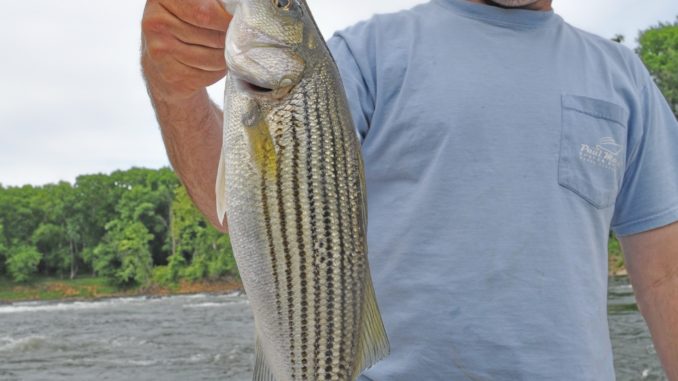
Weldon area is where the action is for May stripers in Roanoke River.
Perhaps no fishing technique provides more excitement and satisfaction than using topwater lures.
The anticipation of a surface attack is almost as thrilling as actually watching a fish smack a lure on the surface. Freshwater fishermen especially like to find striped bass willing to attack topwaters.
The problem is that unless one happens to be at the right place at the right time, it’s a hit-or-miss proposition. Stripers must be visible, slamming baits, before anglers can motor to within casting range, and lake-bound stripers feed in deep water most of the time. That leaves rivers as the best places to engage in topwater fishing for stripers.
Although resident populations of striped bass, aka “rockfish,” live and migrate up several North Carolina rivers each spring to spawn, they really aren’t good candidates to maul surface lures, except in that stretch in the western-most section of the Roanoke at Weldon, just east of the town or Roanoke Rapids.
What makes this portion of the river unique are two characteristics: plenty of available baitfish and rocks that squeeze the Roanoke’s flow — coming from reservoirs upstream through Roanoke Rapids Lake Dam — into two or three narrow channels.
“Topwater fishing is best here in the spring, usually May, when the river flow is at least 5,000 (cubic feet per second) or less,” said Richard Andrews of Washington, who guides anglers on the river every spring. “If the flow is around 5,000 cfs, that’s just about perfect for a good topwater bite. Anything less is kind of a problem for boat traffic.”
At higher flow rates, stripers still can be caught, but not with the every-cast regularity of a 5,000 to 6,000 cfs flow. When high water submerges the rocks, the river widens and baitfish don’t become as concentrated in the narrow channels where stripers easily can attain a meal.
“Anywhere between 5,000 and 6,000 cfs is good for topwater action here,” said Andrews. “The problem for boaters is when the flow is more than 5,000 cfs; it hides some of the rocks and some near the boat ramp. Boaters need to be extra careful. I’d recommend first-timers go with someone who knows the river.”
Andrews said when the water flow reaches 8,000 to 9,000 cfs, it covers the top of the largest rocks at Weldon.
Before the river’s dams and lakes (John H. Kerr, Gaston, Roanoke Rapids) were built, the best water flows for striped- bass reproduction was at high levels.
“A good healthy spawn used to occur when the water was stable and didn’t get less than 8,000 or 9,000 cfs,” Andrews said, admitting that was before dams were built upstream.
However, with high spring water flows, the Roanoke River often slipped the bonds of its banks. As a result, fertilized striped bass eggs often floated into low-lying farm lands and swamps. When the waters receded, it stranded millions of eggs, unable to continue their journey downstream toward Albemarle Sound.
But with a more-controlled flow of water during the spring, the U.S. Army Corps of Engineers’ water-release schedule from Roanoke Rapids Dam allows the river to remain between its banks — and striper eggs stay on schedule to hatch. The more controlled water flow doesn’t strand as many eggs, ultimately resulting in better striped bass survival rates.
The Corps ultimately controls water flows by tinkering with the levels upstream at John H. Kerr Reservoir, aka Buggs Island Lake, allowing water levels to rise and drop as much as 14 feet, although such dramatic changes haven’t happened in several years. But for topwater fishing purposes, the best flows remain about 5,000 to 6,000 cfs.
“Look at the stripers rolling in the current,” Andrews said one day last May as he eased his skiff just downstream of the Weldon rocks and anchored up.
“These stripers will turn on, and the fish might start biting any time, but you might not be able to see them unless you’re right here. They don’t bite all the time, but I’ve noticed they been pretty consistent from about 4 p.m. until dark the last few days,” he said.
As his primary tackle, Andrews had several 7-foot spinning rods fitted with Penn Battle Spin reels spooled with 8-pound braid and 2 1/2 feet of fluorocarbon leader tied to a Z-Man MinnowZ paddletail in white with blue fleck. He also uses a fly rod outfitted with sinking line and likes Clouser and Deceiver flies.
Last spring, Andrews said he caught bigger fish in April, fish between 21 and 27 inches, then smaller male fish in May — the opposite of normal years. He expects the small fish of the 2012 spring to be in the 22- to 27-inch range this April and May.
“I think the 12- to 14-inch stripers were indicative of a dominant age class from a strong spawn in 2010,” he said. “We seemed to be missing fish born in 2009 when we had a weak spawn because of low water and poor conditions. The fish born in 2010 should be bigger this year, so we should have a great fishing season.”
The topwater fishing for the next few hours after Andrews anchored up could be described only as wild, action-packed, consistent and thrilling.
What created a perfect storm for topwater action were the boulders in the river just above the public boat ramp in Weldon that squeezed the water rushing between them, and in that flow were thousands of baitfish — mostly threadfins, but some gizzard shad — washed through the Roanoke system from upstream.
Weldon’s rocks were a veritable smorgasbord of baitfish for the stripers, from the top of the water column to the bottom.
Anglers who could cast to the swift current had no problems catching stripers this day. The only question was how long a jig with a soft-plastic body, a topwater lure or a fly would float through the roiling current before it was attacked savagely by a fish.
Most of the stripers were on the small side, from 14 to 19 inches long, but bigger fish were waiting. Anglers often catch 20-pounders and heavier striped bass from the Roanoke each spring.
“I think the problem right now in May at Weldon is the water flow is fast through the rocks, and the male stripers, the smaller ones, are above bigger fish,” Andrews said. “A lure doesn’t have a chance to get down to a large female. It’s kind of strange; you get more strikes because the stripers are stacked up, but most of them are smaller fish.”
That was a nice problem to have, because battling a 4-pound striper in the river’s current is similar to tussling with a 10-pound smallmouth.
Anglers must alter store-bought topwater lures such as Chug Bugs before they can be fished in the Roanoke for stripers. In fact, all lures with barbed hooks must be replaced by single, barbless hooks. Most anglers replace the treble hooks that come as standard equipment with single hooks and crimp down the barbs with pliers.
The barbless-hook restriction is in place in the main river and all tributaries upstream from the US 258 bridge to the Roanoke Rapids Lake Dam from April 1 through June 30 — prime rockfish season.
Andrews removes the trebles from his topwater lures and attaches a single, barbless hook to the front eyelet. The lure will cast farther and retrieves well, spitting water and attracting the attention of stripers. Zara Spooks are useless to fish in the fast-moving water because it’s impossible to impart a walk-the-dog motion, so a “spitting” plug, such as a Chug Bug, is a better choice.
Clark Purvis, another Roanoke River guide, likes to use a Pop-R with frog-leg trailers.
“I’ll use a fly rod, too, when it gets too easy to catch them with topwater lures or soft-plastic lures,” said Purvis. “I use Zoom Flukes to catch a lot of stripers here.”
When he was a youngster fishing with his father — before the N.C. Wildlife Resources Commission regulated the striper fishery so closely — Purvis said the topwater bite was so tremendous he’d often cut a 6-inch piece of broom handle or PVC pipe, add treble hooks, cast and retrieve it and catch striped bass.
“It’s not like that now, but you can hook and land 100 or more fish in a day at the Weldon rocks when the conditions are good,” he said.
DESTINATION INFORMATION
HOW TO GET THERE — The towns of Roanoke Rapids and Weldon are easily accessed from I-85, I-95 and US 158. Weldon is a few miles east of I-95; the public boat ramp is on the south side of the Roanoke River, just downstream from the US 301/158 bridge. Shoals near the ramp may limit upstream navigation.
WHEN TO GO — Stripers are in the Roanoke River from early April through the end of May and sometimes longer. Through April 30, fishermen may keep two stripers a day, with an 18-inch minimum size limit, a 22- to 27-inch slot limit (no harvest), and only one fish per day over 27 inches. Fishing in May is catch-and-release only, but fishing pressure is usually lower. Best fishing times are when the water flow through Roanoke Rapids Lake Dam range from 5,000 to 6,000 cubic feet per second. To view water flow rates of the river at Roanoke Rapids, visit the National Weather Service’s charts on-line at http://water.weather.gov/ahps/.
TACKLE/TECHNIQUES — Medium-action baitcasting or spinning tackle (7-foot rods are the ticket for longer casts needed to reach fish) and 6- to 7-weight fly rods work for most Roanoke River striper. Topwater fishing peaks during May but all lures are required to have single, barbless hooks. Chug Bugs and Flambeau Pop-Rs with frog leg trailers are popular topwater lures; Clousers and Deceivers are popular fly patterns. Before March 1 and after June 30, other types of hooks may be used, but no fish can be kept.
GUIDES/FISHING INFO — Richard Andrews, Tar-Pam Guide Service, 252-945-9715, www.tarpamguide.com; Clark Purvis, Roanoke River Waterfowl, 252-314-6865 www.roanokeriverwaterfowl.com; George Beckwith, Down East Guide Service, 910-249-3101; Rod Thomas, Capt. Ponytail Guide Service, 336-240-5649, www.captainponytail.com; Colston’s Tackle Box, Roanoke Rapids, 252-537-6485. N.C. Wildlife Resources Commission, 919-707-0220, http://www.ncwildlife.org/. See also Guides and Charters in Classifieds.
ACCOMMODATIONS — Days Inn, Weldon, 252-536-4867; Interstate Inn, Weldon, 252-536-4111; New Yorker Motel, Weldon 252-536-3148; Orchard Inn, Weldon, 252-536-2131; Comfort Inn, Roanoke Rapids, 252-535-3300; Hampton Inn, Roanoke Rapids, 252-537-7555; Holiday Inn Express, Roanoke Rapids, 252-536-2300; Motel 6, Roanoke Rapids, 252-537-5352; Sleep Inn, Roanoke Rapids, 252-537-3141; Jameson Inn, Roanoke Rapids, 252-533-0022.
MAPS — DeLorme’s North Carolina Atlas and Gazetteer, 800-561-5105, www.delorme.com.

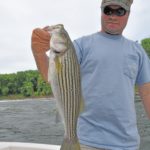
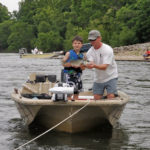
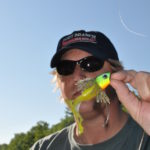
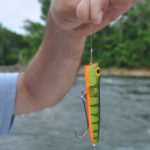
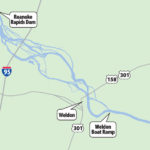



Be the first to comment